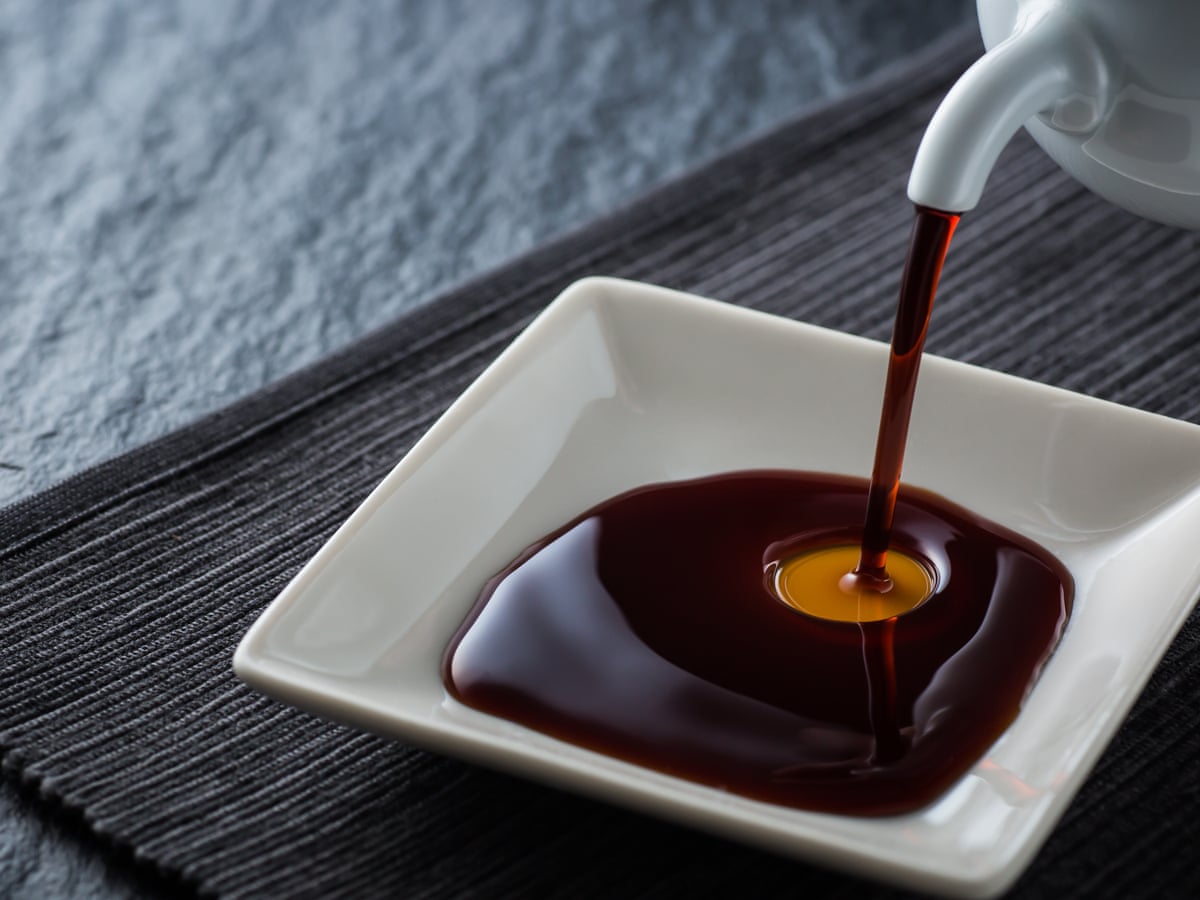
Soy sauce, a popular condiment in many cuisines around the world, has been used for centuries to add flavor to dishes. Made from fermented soybeans, soy sauce has a rich, salty taste that enhances the umami flavor in a wide range of foods.
The process of making soy sauce begins with steamed soybeans and roasted wheat. These ingredients are mixed with a specific strain of mold, known as koji, which helps break down the proteins and carbohydrates in the soybeans and wheat. This mixture is then fermented for several days, during which time the koji mold converts the proteins and carbohydrates into amino acids and sugars.
Next, the fermented mixture is combined with water and salt, and the resulting liquid is pressed to extract the soy sauce. The liquid is then pasteurized to kill any remaining bacteria and enzymes, and it is aged for a period of time to develop its unique flavor profile.
So, is soy sauce bad for you? While soy sauce is high in sodium, it also contains essential amino acids and minerals. In moderation, soy sauce can be a healthy addition to a balanced diet. However, individuals with high blood pressure or those following a low-sodium diet should consume soy sauce in limited amounts.
To sum it up, soy sauce is a flavorful condiment made from fermented soybeans and wheat. It adds a rich, salty taste to a variety of dishes and can be enjoyed in moderation as part of a healthy diet. Remember to always read the nutrition labels and listen to your body’s needs when using soy sauce in your cooking.
Traditional Production

In traditional soy sauce production, the process begins with the fermentation of soybeans and wheat. First, the soybeans and wheat are soaked together in water to soften them. Then, they are cooked and crushed to create a paste.
Next, the paste is mixed with a culture of Aspergillus oryzae, a type of mold, and left to ferment for several days. During fermentation, the mold breaks down the proteins and carbohydrates in the paste and produces enzymes that give soy sauce its distinct flavor.
After fermentation, the mixture is mixed with brine, which is salt water, to create a soup-like liquid. This liquid is then pressed and filtered to remove any solid particles, resulting in a smooth liquid.
The liquid is then transferred to large wooden barrels or vats, where it undergoes further fermentation and aging. The length of aging depends on the desired flavor and quality of the soy sauce. Traditional soy sauce can be aged for months or even years.
During aging, the soy sauce develops complex flavors and aromas. It also undergoes a natural oxidation process, which gives it a darker color. The longer the aging process, the darker and more intense the soy sauce becomes.
Once the aging process is complete, the soy sauce is pasteurized to kill any remaining bacteria and to extend its shelf life. It is then bottled and ready to be sold.
Traditional soy sauce production methods are time-consuming and require careful monitoring of temperature and humidity. However, these methods are essential for creating the authentic flavors and aromas that have made soy sauce a staple in many cuisines around the world.
Chemical production

Soy sauce production involves a chemical process that transforms soybeans, wheat, water, and salt into a flavorful and savory condiment. The first step of the chemical production involves cooking and fermenting the soybeans and wheat together in a mixture of water and salt. This process helps break down the proteins and carbohydrates in the soybeans and wheat, releasing amino acids and sugars that contribute to the unique taste of soy sauce.
Next, the mixture is left to undergo fermentation, a process that takes several months. During fermentation, naturally occurring microorganisms, including yeast and bacteria, convert the sugars and amino acids into various compounds, such as organic acids and alcohols. These compounds contribute to the complex flavors and aromas of soy sauce.
After fermentation, the mixture is pressed to separate the liquid, which is the resulting soy sauce, from the solid residue. The liquid is then pasteurized to halt the fermentation process and ensure food safety. Finally, the soy sauce undergoes a filtration process to remove any solid particles or sediment, resulting in a smooth and clear liquid.
Chemical additives, such as preservatives or flavor enhancers, may be added during the production process to improve the taste and extend the shelf life of the product. However, traditional soy sauce production methods focus on natural fermentation and do not involve the use of significant chemical additives.
Overall, the chemical production of soy sauce is a complex process that relies on the breakdown of proteins, fermentation by microorganisms, and the addition of natural ingredients to create the distinctive flavor and aroma of this popular condiment.
Regional Differences

Soy sauce is a staple condiment in many Asian cuisines and different regions have their own unique variations of soy sauce.
In Japan, there are two main types of soy sauce: shoyu and tamari. Shoyu, which is the most common type, is made from a combination of soybeans and wheat. Tamari, on the other hand, is made from only soybeans and is a gluten-free option.
In China, there are several different types of soy sauce, including light soy sauce, dark soy sauce, and thick soy sauce. Light soy sauce is the most commonly used and has a thinner consistency and lighter color. Dark soy sauce, on the other hand, is aged for a longer period of time and has a thicker consistency and darker color. Thick soy sauce is similar to dark soy sauce but has a sweeter taste.
In Southeast Asian countries like Thailand and Malaysia, soy sauce is often combined with sugar, garlic, and other spices to create a flavorful dipping sauce or marinade.
In Korea, soy sauce is often used in making kimchi, a traditional fermented vegetable dish. It is also used as a base for many Korean sauces and marinades.
Overall, the regional differences in soy sauce production and usage contribute to the diverse and distinct flavors of Asian cuisines.








